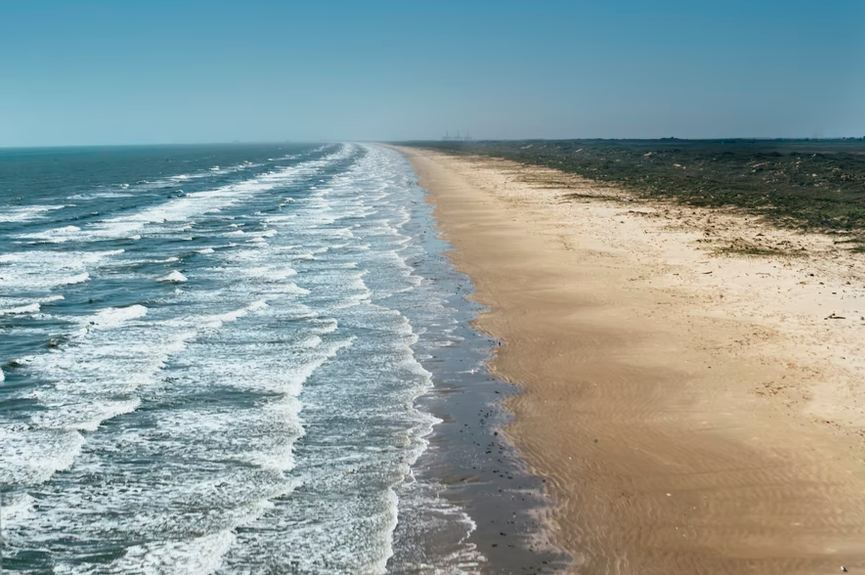A classic beach town that boasts a vast expanse of sandy shorelines with warm waters of the Gulf Coast, Port Aransas is indeed a blissful island destination enticing everyone for a swim. Adding the camping, surfing, seashell collecting, and fishing opportunities, beautiful sunset, fantastic wildlife, and great amenities, there’s no reason why you shouldn’t visit this Texas getaway. Before you do so, read on below and read our tips for staying safe on the beaches of Port Aransas, and ensure that you only have a worry-free, fun beach day.
Look out for warning flags.
Like other beaches in other states, Port Aransas beaches have a flag system to warn you of current water conditions and inform you about swimming safety. Advisories are placed on access roads, detailing what each colored flag means.
A red flag means that current water conditions are incredibly dangerous, which means you should avoid the water. Yellow signals moderate danger, implying you could take a swim, but you need to be wary of your surroundings.
You’ll love to see the green flag raised, as it indicates that the water is safe and clear. Meanwhile, a blue flag means that potentially dangerous marine life, such as jellyfish, man-o-war, or stingrays, has been spotted, so you need to be extra cautious. Knowing all these warning flags before you set your foot on the sand can do a lot for your safety.
Check the weather.
Before you head to the beach, check the weather first to see if there’s a rain and lightning forecast. Avoid it if gloomy weather is expected – there are other days you can enjoy the beach and the sun! Typically, the best time to visit Port Aransas beach is from mid-March to early May and from late October to mid-November. It’s best just to plan your trip ahead.
Learn how to swim.
Swimming in the ocean is a whole lot different from doing it in a swimming pool or calm lake. That’s why it’s best to learn how to swim so that you can manage yourself in the strong surf. If you have kids, enrolling them in swimming lessons at the age of one to four drastically reduces their risk of drowning. Nevertheless, you must still look after them, as water conditions can change rapidly.
Well-fitting lifejackets are handy if you’re yet to learn how to swim. Obeying the buddy system or keeping a family member or friend nearby is also advisable, so you have someone to call for help, just in case the need arises.
Swim near lifeguard posts.
Lifeguards are there to ensure beaches are safe in and out of water. They know and notice many things an average person may not be aware of. That’s why it’s best to stay near lifeguards’ posts, as it’ll seem that there’s always someone looking after you.
Stay near their stations when swimming, especially that drownings commonly occur on unguarded sites. Be also mindful that currents may take you in various directions. Always check the lifeguard’s flag so you’ll know where to go back. Lastly, don’t hesitate to ask questions – you’ll definitely learn a lot from them.
Watch out for riptides.
Rip currents are real and can even sweep even the most skilled swimmer. Despite lifeguards saving tens of thousands of lives a year, an average of 100 people still gets killed due to riptides each year. Familiarize yourself with rip currents, undertow, and rough surf so you can quickly spot signs of any. In case you still get pulled out, compose yourself and try to swim parallel. Afterward, swim diagonally to reach the shore. Just do your best to stay afloat, wave your arms and yell for help.
Bring the beach essentials.
Any trip to the beach won’t be complete without packing the essentials. Typically, these include your bathing suit, swimwear, tank tops, shorts, sandals, and flip-flops. Don’t forget about your toiletries like soap, shampoo, toothpaste, toothbrush, and a travel hand sanitizer. Lastly, bring some beach gear like picnic blankets, beach chairs, beach umbrellas, sand toys for the kids, floats, beach sport games, and snorkel gear to make your stay at the beach more fun and exciting.
Block the sun.
Sunburn can quickly turn your beach day sour. With that, never miss slathering sunscreen to protect your skin. Not only do you veer away from the unwanted suntan and blisters. Remember, cumulative extreme sun exposures can put you at greater risk of developing skin cancer later in life. So, coat yourself generously with high SPF sunblock. You can also wear hats and UV-protective garments for added protection. Look out for shades, be it from a tent or your beach umbrella, especially during the sun’s peak hours from 10 AM to 4 PM when UV rays are strongest.
Hydrate yourself with the right fluid.
You can quickly become dehydrated with extended exposure to heat and the sun. With that, bring and drink plenty of water at the beach, more notable if you’re swimming or doing other fun activities. While drinking alcohol is allowed until 6:00 PM, it’s still best to avoid it at the beach. Drinking booze can impair your judgment, increase the risk of heat-related illnesses, and dehydrate you faster, which can lead to accidents and mishaps – things that can quickly ruin your outing.
Takeaway
Make your trip to Port Aransas’s stunning beaches memorable by reviewing and following these beach safety tips. Share it with your family members and friends before you head on to the destination. That way, you can keep everyone wary and safe. With the distinct beauty and fun Port A offers, expect to return again and again for fabulous vacations.


